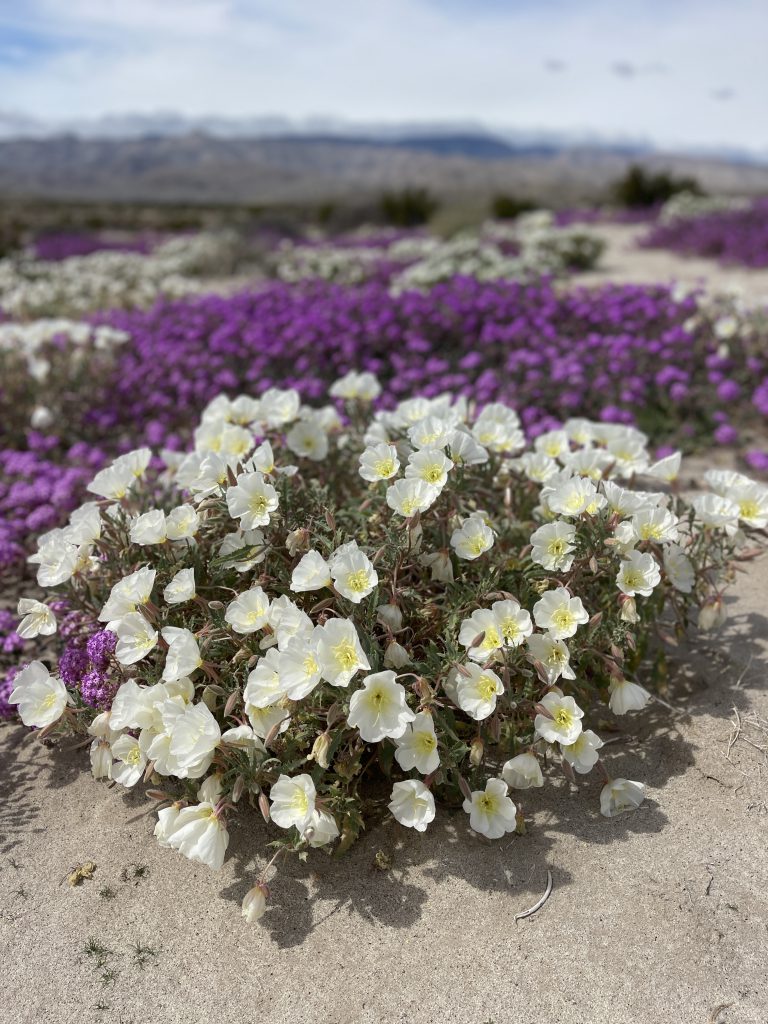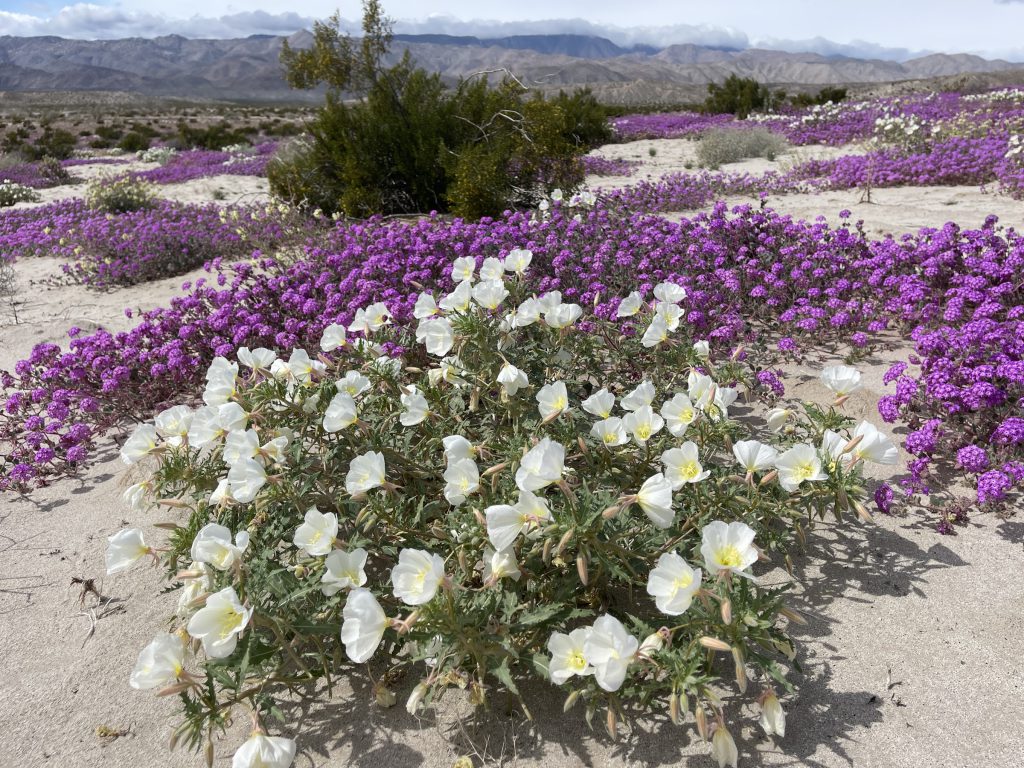Dune Evening Primrose, scientifically known as Oenothera deltoides, is a small, delicate flowering plant that is native to the sandy and gravelly soils of the North American deserts. Despite its small size, this plant is remarkable in its adaptations to survive in extreme environments.
It can also known as Desert Primrose, Birdcage Evening Primrose and Basket Evening Primrose
One of the most notable features of the Dune Evening Primrose is its ability to conserve water. The plant has a deep taproot that can reach underground water sources, while its leaves are covered in tiny hairs that help to reduce water loss through transpiration. During the day, the plant’s leaves curl up to conserve water and protect against the harsh desert sun. However, as soon as the temperature drops at sunset, the leaves unfurl and the flowers open, releasing their sweet fragrance into the night air.


The white flowers of the Dune Evening Primrose are about an inch in diameter and have four petals arranged in a cross shape. They open in the late afternoon or evening and close again the next morning, which makes this plant a fascinating example of a circadian rhythm. After the flowers are pollinated, the plant produces long seed pods that contain many small seeds. These seeds are an important source of food for desert animals, including rodents and birds.
Overall, the Dune Evening Primrose is a remarkable plant that has evolved to survive in extreme environments. Its adaptations to conserve water and thrive in hot, dry conditions are truly impressive. This plant reminds us of the resilience of nature and the amazing diversity of life on our planet.
Check the current Anza Borrego wildflower reports from the ABDNHA🌸
